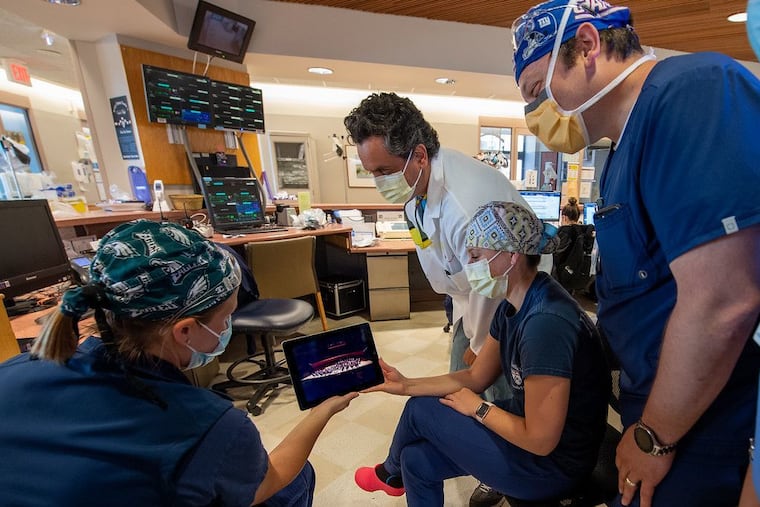Philadelphia Orchestra channel gives Penn hospitals a new soundtrack
Patients and healthcare workers at Penn Medicine’s six sites can now access a service that brings them archived performance videos of the Philadelphia Orchestra.

The monotonous beeps and blips of the hospital setting are being joined by a friendlier set of sounds.
Patients and health-care workers at Penn Medicine’s six sites can now access a service that brings them archived performance videos of the Philadelphia Orchestra. Beethoven and Mahler symphonies, as well as chamber pieces, are among the works now available on screens throughout the hospital system.
“I was listening to some of it, to Beethoven’s Fifth and Sixth symphonies, and it’s beautiful,” said Jose Pascual, who is co-medical director of the surgical ICU at Penn Presbyterian Medical Center and a violinist in the Penn Med Symphony Orchestra.
Orchestra president and CEO Matías Tarnopolsky framed the new Philadelphia Orchestra channel in the hospitals as a way to “make people feel better at this difficult time,” and as a chance to “share the healing power of music.”
The COVID-19 pandemic has created “an incredible amount of uncertainty and complexity layered on the existing complexity we deal with in healthcare every day,” said Hospital of the University of Pennsylvania CEO Regina Cunningham. “It’s a time that’s created a lot of anxiety for patients and their families.”
» READ MORE: Philly region pays tribute to Memorial Day by virtual ceremonies, visiting war memorials, and playing ‘Taps’
The introduction of classical music has helped to alleviate tension for some, she said.
“Patients have given us feedback that they are utilizing it, that they find it helpful, and that they find it comforting.”
The new orchestra channel started streaming this month to screens at the Hospital of the University of Pennsylvania, Pennsylvania Hospital, Penn Presbyterian, Chester County Hospital, Lancaster General Health, and Princeton Health — with a combined total of about 3,095 beds.
New performances will be added each week, and orchestra leaders hope to expand the pilot program to other health systems.
Decades of research and practice point to the value of music to healing, with some studies documenting music’s role in reducing stress, anxiety, and pain.
Emily Hanes, a Penn Presbyterian nurse and amateur violinist, says it’s not always possible to know in the moment how patients are taking in music. About a month ago she played Bach for a COVID-19 patient from behind the door.
“Weeks later I talked to him after he got better, and he said that even though he was very sick and delirious he remembered me playing for him and talked about how nice that had been,” she said.
The orchestra’s new channel “sounds like a really wonderful service for people who prefer classical music, and hopefully it can create some new appreciation for it,” said Florence Ierardi, director of the music therapy and counseling program at Drexel University.
It is, however, not the same as music therapy.
“In music therapy, the therapist would invite a relationship with an individual,” she said. “There is an approach to music therapy whereby the music therapist incorporates an individualized listening experience, followed by discussion of the impact of the music for the patient. There are also expressive or active methods in music therapy, including clinical improvisation and songwriting.”
Something else a music therapist does is work with an individual to determine preference for different musical genres or cultural sources, she said, as well as set therapeutic goals.
HUP does not have a formal music therapy program, though it does bring music into the hospital on a regular basis, Cunningham said. But, she said: “I hope this partnership opens the door to more music therapy programs across our health system.”
» HELP US REPORT: Are you a health care worker, medical provider, government worker, patient, frontline worker or other expert? We want to hear from you.